
The Kr?nzelhof Labyrinth, a maze among the vineyards
In South Tyrol, near Merano, there is a labyrinth nestled in the vineyards: it is that of the Kränzelhof Estate, located in Cermes. Its special feature? It is made of vines.
By Redazione | 11/09/2024 16:37
Not one, not two, not even three, many more: there are as many as seven gardens at the Kränzelhof Estate in Cermes, South Tyrol, a short distance from Merano. This historic winery is located here, where lush vineyards have long been cultivated from which organic wines are made that have made Kränzelhof a well-known name among wine lovers: six hectares of vineyards, fifteen different grape varieties, guaranteeing a production of forty thousand bottles a year. Three different lines, from the most classic to the most innovative proposals, to meet everyone's needs. And for some time now, art and nature have been added to vineyard cultivation at Kränzelhof.
In fact, Kränzelhof is home to seven thematic gardens that can be visited, each offering a different sensory experience. They are the Garden of Confidence, the Garden of Emotions, the Garden of Courage, the Garden of Heart and Love, the Garden of Expression, the Garden of Intuition, and the Garden of Consciousness, created by landscape architect Bernhard Zingler. These gardens are not only spaces of natural beauty, but also places of artistic and spiritual interaction. Each is designed to stimulate a different reflection or emotion in visitors. The gardens combine botanical and sculptural elements, creating a kind of dialogue between nature and art, and are the result of an evolving art project that combines native plants with modern art installations, helping to make each visit a new experience. Next to the seven gardens is the Sculpture Garden, where works of art have been placed in close connection with nature, and above all the Labyrinth, the heart of Kränzelhof, a work with few equals in Trentino-Alto Adige. This green labyrinth was designed not only as a physical and mental challenge, but also as a meditative path. As one ventures through its intricate paths, the idea is to find not only the way out, but also a moment of inner reflection. As visitors get lost in the hedges, they are invited to reflect on the meaning of life, their choices and the paths they have taken, making the experience a journey not only in space, but also within themselves.
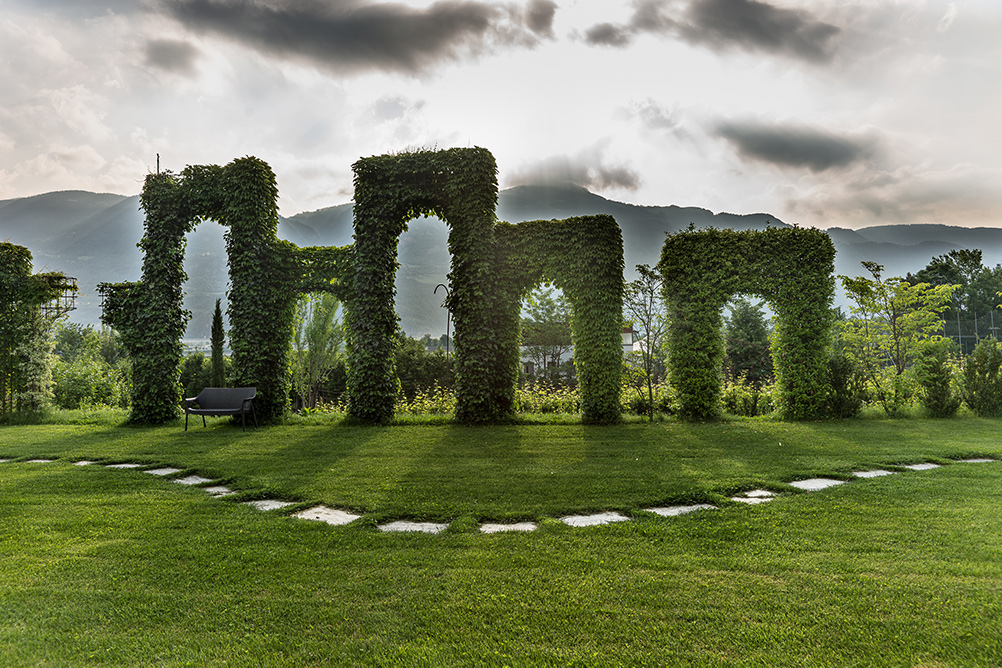
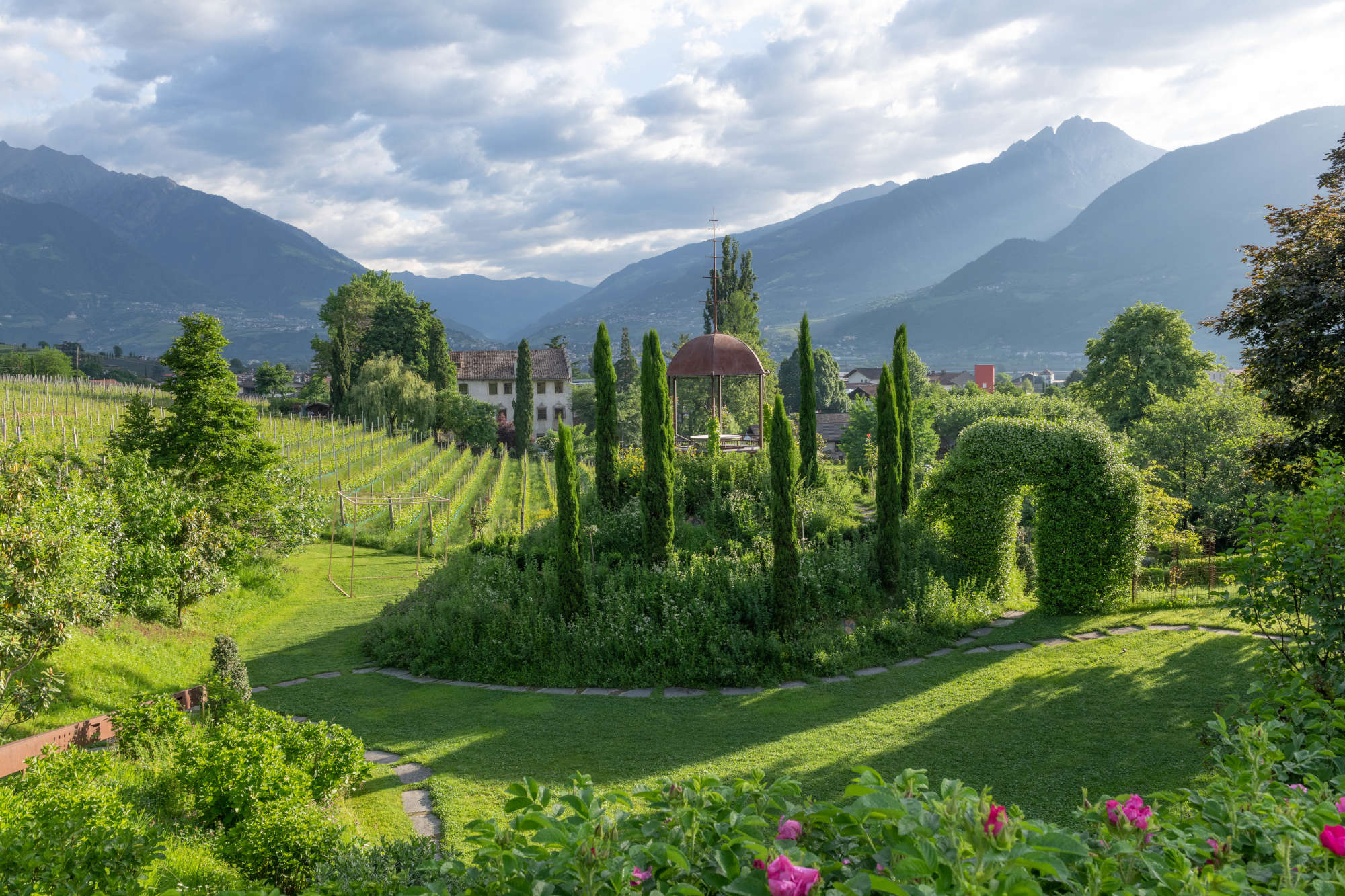
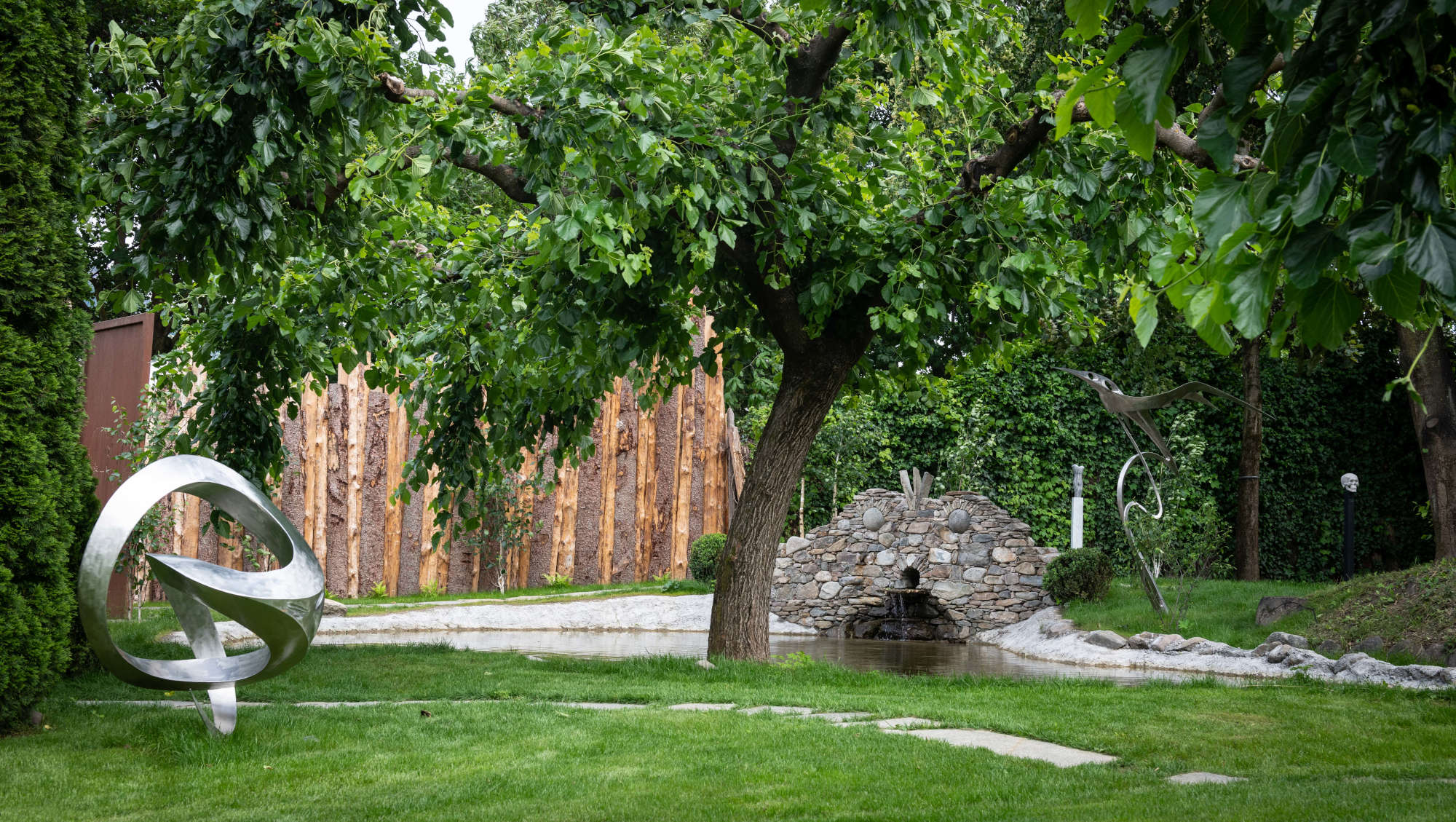
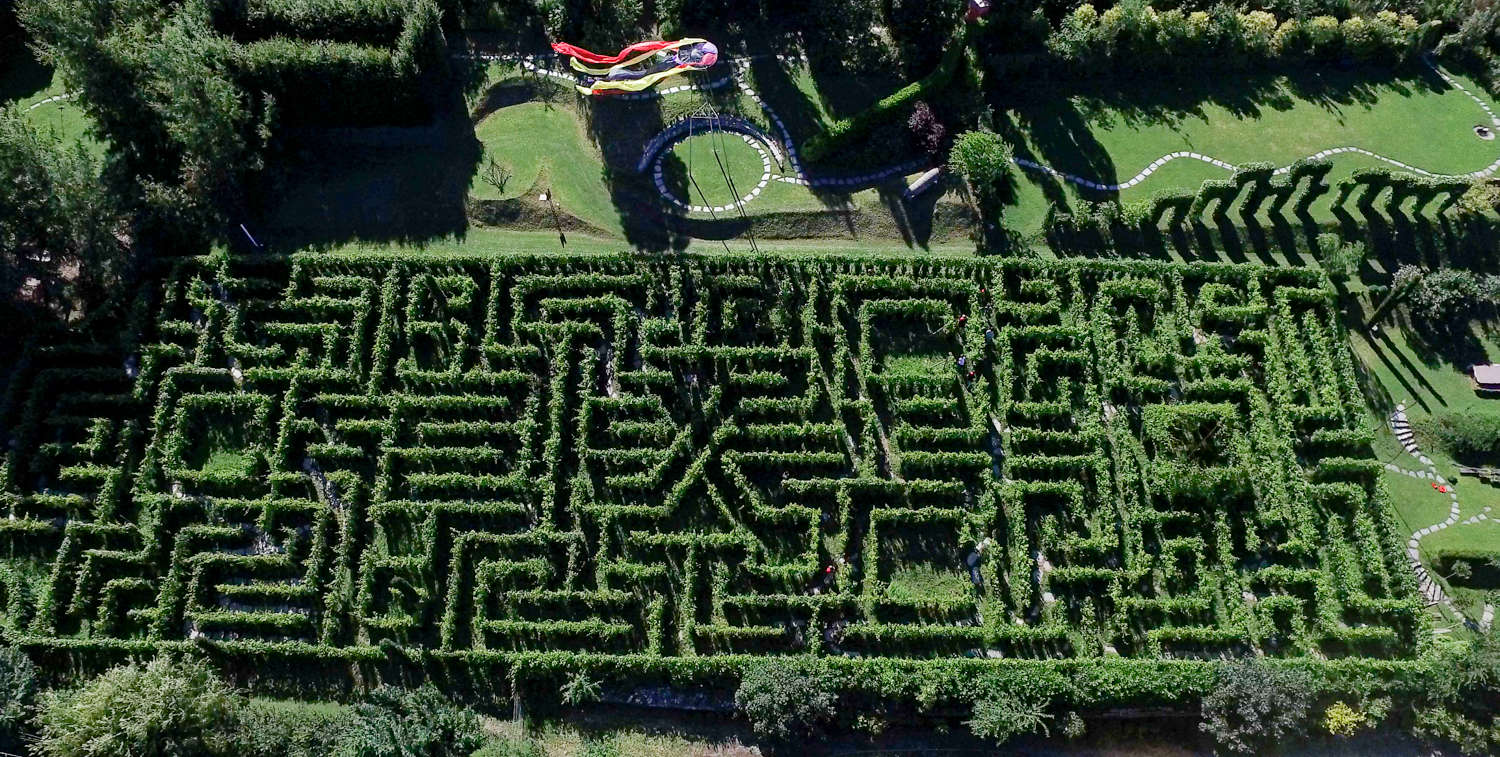
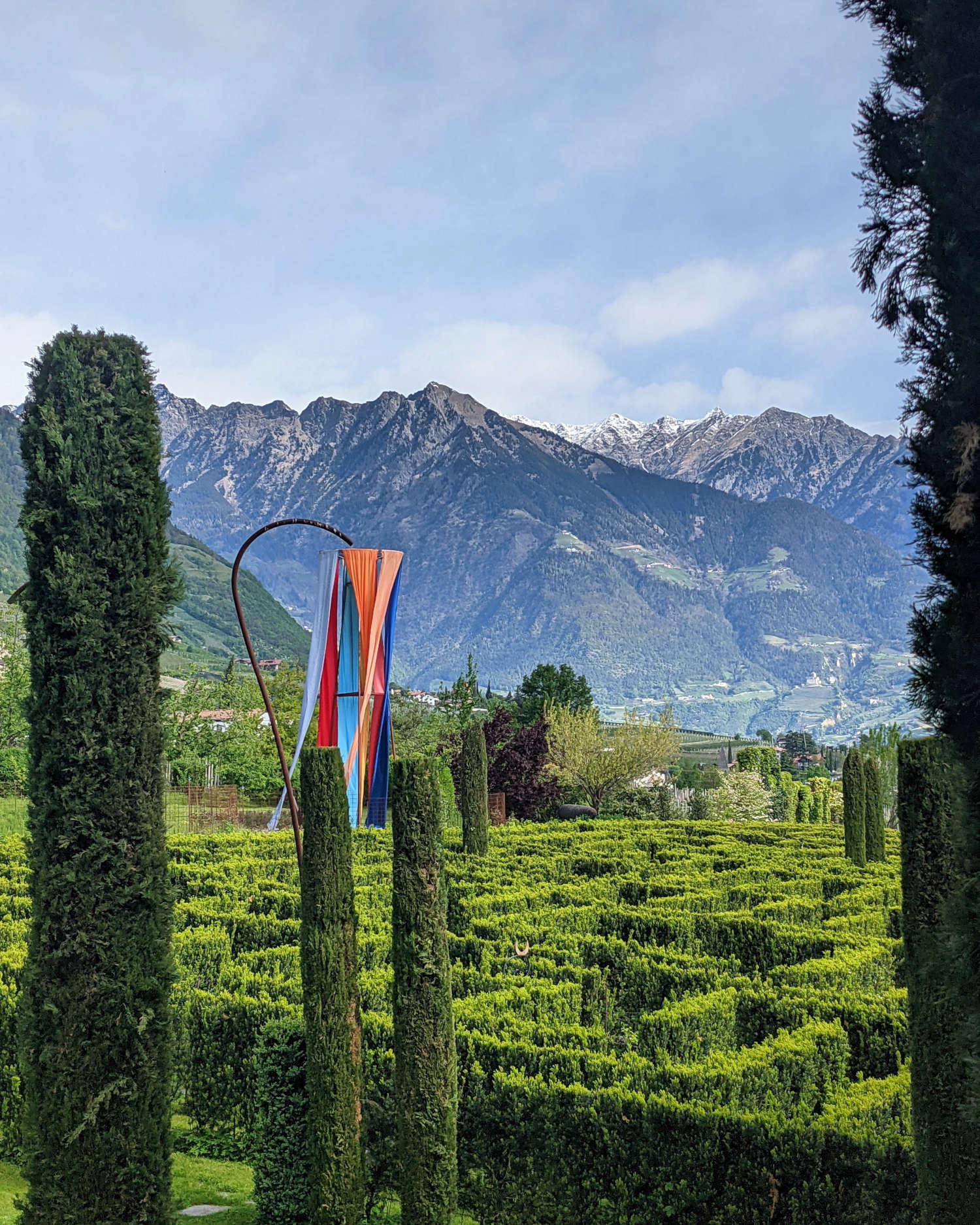
The Kränzelhof Labyrinth was created in 2006: the layout was designed by Gernot Candolini, considered one of Europe's foremost labyrinth experts, who thought to employ, for the South Tyrolean labyrinth, an essence not used elsewhere, the symbolic botanical essence of this place, namely the grapevine. It follows, then, that the Kränzelhof Labyrinth is never the same: in autumn it changes color, with the leaves of the vine trail taking on yellow and red hues. What's more, it is a vine from which grapes are harvested and from which wine is made. In fact, it is probably the only labyrinth in the world from which wine is made.
The work, consisting of well-manicured bushes and designed with great attention to detail, is a metaphor for the journey of life, with all its twists and turns, obstacles and unknowns. Reaching the center of the labyrinth can be seen as a symbolic search for truth or inner peace. It is not only about finding the way out, but also about enjoying the process, learning from the experience and reflecting on what has been experienced.
Moreover, this labyrinth was made with a complex layout, which follows an original pattern. The layout of the Kränzelhof Labyrinth, which is extensive and particularly ingenious with corridors that constantly change shape, is intended to be a symbolic representation of the human soul. Unlike labyrinths that, in ancient times, were made for the purpose of having the visitor take a route in search of the self (for example, the labyrinths found in Christian circles), in this case there is no single path to follow, but the possibilities are diverse. The Kränzelhof Labyrinth is thus not only a place of aesthetic beauty. Its layout and philosophy reflect a deeper search for harmony between man and nature. It is a place where visitors can slow their pace, immerse themselves in stillness and find a sense of inner peace, or meditate on themselves. The open spaces, works of art and layout of the gardens are all designed to stimulate a dialogue between body, mind and spirit. A place of contemplation, then, of connection with nature. That is why a visit to Kränzelhof promises to be one to remember.




